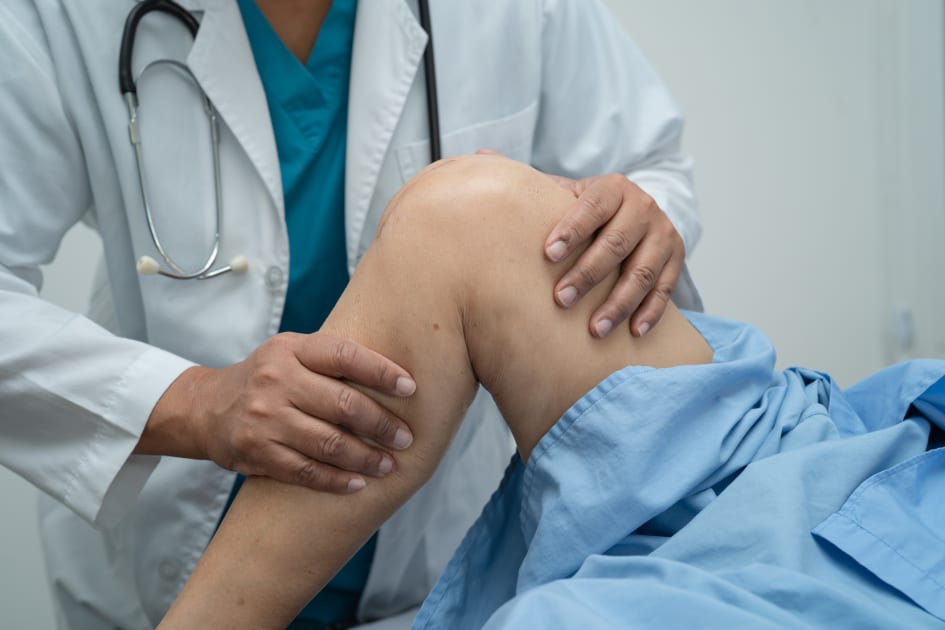Emergency Department Visits Within 90 Days of Anterior Cruciate Ligament Reconstruction
Journal: Orthopedic Journal of Sports Medicine
Who: Alexander J. Kammien, BS; Justin R. Zhu, BS; Michael J. Gouzoulis, BS; Harold G. Moore, BS; Anoop R. Galivanche, BS; Michael J. Medvecky, MD; Jonathan N. Grauer, MD
Overview: Emergency room (ED) visits after orthopedic surgery, such as anterior cruciate ligament (ACLR) reconstruction, impact patients and healthcare systems and need to be better understood.
Patients who had undergone ACLR between 2010 and 2020 were identified in a national database, and 90-day emergency room visits, readmissions, risk factors and primary diagnoses for visits were determined. One year postoperative data was used to establish weekly baseline ED visits for the cohort. Age, gender, Elixhauser comorbidity index, region of the country (Northeast, Midwest, West, South), and insurance coverage (Medicare, Medicaid, and commercial) were extracted and these variables were compared using univariate analysis and multivariate logistic regression.
Patients who had undergone ACLR between 2010 and 2020 were identified in a national database, and 90-day emergency room visits, readmissions, risk factors and primary diagnoses for visits were determined. One year postoperative data was used to establish weekly baseline ED visits for the cohort. Age, gender, Elixhauser comorbidity index, region of the country (Northeast, Midwest, West, South), and insurance coverage (Medicare, Medicaid, and commercial) were extracted and these variables were compared using univariate analysis and multivariate logistic regression.
Of the 81,179 patients, emergency room visits were identified for 6764 (8.3%) and readmissions for 592 (0.7%). A total of 5300 patients had 1 ED visit, 1020 patients had 2 visits, 275 patients had 3 visits, and 169 patients had ≥4 or more visits; visits occurred within 2 weeks of surgery 38% of the time. Notably, weekly visits returned to baseline at week 3. Independent predictors of ED use from multivariate analysis were insurance type (relative to commercial insurance: Medicaid [odds ratio [OR], 2.41; 95% CI, 2.23-2.60]and Medicare [OR, 1.38; 95% CI, 1.19-1.60]), higher Elixhauser comorbidity index (per 2-point increase: OR 2.24; 95% CI, 2.18-2.29), younger age (per 10-year decrease: OR 1.23; 95% CI, 1 .21–1.24), female gender (OR 1.05; 95% CI 1.02–1.08), and region of country (relative to west: Midwest [OR, 1.33; 95% CI, 1.26-1.39]Northeast [OR, 1.24; 95% CI, 1.18-1.30]and South [OR, 1.17; 95% CI, 1.12-1.23]† In the first 2 weeks, 67.5% of ED visits were for surgical site problems, mostly surgical site pain (29% of all visits). In the total 90-day period, 39.4% of visits were at the surgical site.
Within 90 days of ACLR, >8% of patients visited the ED, while 0.7% were readmitted. ED visits increased in the first 2 postoperative weeks and returned to baseline around week 3. Within the first 2 weeks, two-thirds of visits involved the surgical site. Younger patients, patients with a greater burden of comorbidity, patients in certain regions of the country, and patients on Medicaid were more likely to have ED use.


Comments are closed.